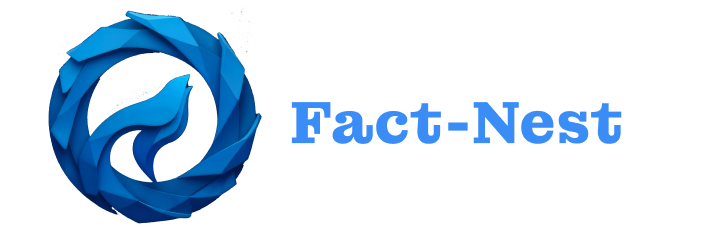Summary
Boost Your Website Security: Cloudflare Takes Action Against AI Bots Scraping Content addresses the escalating challenge of AI-powered bots that scrape website content without permission, threatening intellectual property rights, digital content integrity, and website revenue. These advanced bots leverage artificial intelligence to interpret complex web layouts, bypass traditional defenses, and extract data even from multimedia sources, enabling competitors and AI companies to repurpose valuable content for AI model training and other uses. The proliferation of such scraping activities has sparked legal disputes and ethical controversies, notably involving major entities like Getty Images and Google, over unauthorized content use and AI training practices.
To combat these threats, Cloudflare has developed and deployed a suite of advanced bot detection and mitigation tools that utilize machine learning, behavioral analysis, and fingerprinting techniques. Central to Cloudflare’s approach is an easy-to-use one-click toggle within its dashboard that enables website owners to block AI scrapers and crawlers automatically. These protections are continuously updated based on global network intelligence to identify emerging bot fingerprints, providing scalable defenses for millions of websites, including those on Cloudflare’s free plan. Beyond blocking, Cloudflare employs innovative strategies such as serving AI-generated decoy pages to mislead malicious bots and conserve server resources, marking a significant shift from reliance on traditional and often ignored measures like robots.txt directives.
While blocking AI scrapers safeguards original content and limits unauthorized data extraction, it also raises complex considerations around balancing security with the benefits of AI-driven traffic and visibility. Some legitimate AI agents contribute positively by linking users back to source sites, prompting Cloudflare and website owners to carefully manage bot access rather than pursue indiscriminate blocking. The ongoing arms race between increasingly sophisticated AI scraping tools and defensive technologies underscores the necessity for continuous innovation, legal frameworks, and industry cooperation to preserve a secure, equitable internet ecosystem.
In response to these evolving challenges, Cloudflare remains committed to enhancing its bot management capabilities, supporting website operators through detailed analytics, customizable rules, and reporting tools that facilitate rapid detection and mitigation of unauthorized AI scraping. This proactive stance positions Cloudflare at the forefront of protecting digital content in an era defined by the rise of AI-driven web scraping and its attendant risks and controversies.
Background
With the rapid advancement of AI-powered scraping tools, websites face increasing challenges in protecting their content. These sophisticated bots can interpret complex web layouts, bypass traditional anti-scraping measures, and even extract data from images and videos, posing significant risks to website owners and their intellectual property. Content scraping enables competitors to replicate unique advantages by unlawfully copying valuable information, such as reviews or proprietary data, and presenting it as their own.
To counteract these threats, various defensive strategies have been employed. Some websites randomize content presentation or update their front-end regularly to disrupt long-term scraping efforts. Others implement challenges designed to be difficult for automated systems to overcome, thereby slowing high-volume scrapers. Additionally, website administrators often use directives in the robots.txt file to deter AI scrapers, although this method requires continuous monitoring and updates due to the emergence of newer, more advanced bots from AI companies.
The need for robust, scalable security solutions has become paramount as these scraping activities threaten not only intellectual property but also the integrity and value of digital content. Recognizing the urgency, Cloudflare has introduced innovative tools and features to help website owners defend against dishonest AI bots and protect their data from unauthorized extraction.
Risks and Impact of AI-Based Scraping Bots
AI-based scraping bots pose significant risks to website owners, primarily by devaluing original content and undermining the integrity of digital assets. When AI models scrape data without proper attribution or permission, the original sources may lose visibility and revenue, as visitor engagement is diverted away from the authentic sites. This content appropriation not only threatens intellectual property rights but also affects the economic viability of websites that depend on unique content for competitive advantage.
Another challenge is the constant evolution of AI bots, which often change user agents or employ new tactics to evade detection and blocking measures. This dynamic landscape necessitates continuous monitoring and updating of security protocols to effectively identify and mitigate malicious scraping attempts. Traditional defenses, such as directives in the robots.txt file, rely on voluntary compliance by bots, but many AI companies have been accused of ignoring these protocols, intensifying the struggle to protect web content.
The rise of generative AI models has further complicated content valuation, as scraped data can be used to train AI systems that generate derivative works, raising ethical and legal concerns. High-profile legal actions, such as those involving Getty Images and Google, underscore the growing controversy over unauthorized use of scraped content for AI training and highlight the risks of IP infringement.
Moreover, scraping activities may jeopardize data security, especially when proprietary or sensitive information is involved. Unauthorized scraping can lead to misuse or security breaches if the gathered data is not properly safeguarded. Despite the risks, blocking all AI access can limit a website’s visibility within the AI ecosystem. Some AI services rely on web data to enhance their offerings, and permitting access may generate traffic and exposure from users of AI assistants. Hence, website owners must carefully balance the benefits of AI-driven traffic against the risks of content theft and misuse.
Cloudflare’s recent initiatives illustrate a proactive approach to this ongoing issue. By detecting inappropriate bot behavior and redirecting scrapers to AI-generated decoy pages, Cloudflare aims to waste the resources of bad actors and protect legitimate web content. This strategy represents a shift from relying solely on the honor system of robots.txt to actively disrupting malicious scraping operations in an environment characterized by a relentless arms race between defenders and attackers.
Cloudflare’s Role in Combating AI Scraping Bots
Cloudflare has taken a proactive stance against the growing threat posed by AI-powered scraping bots, which can interpret complex web layouts, bypass anti-scraping measures, and extract data even from images and videos. Recognizing that website owners do not want AI bots accessing their sites dishonestly, Cloudflare introduced a one-click tool that enables hosts to block all AI bots effortlessly through their platform.
To activate this protection, users simply navigate to the Security > Bots section of the Cloudflare dashboard and toggle the feature labeled “AI Scrapers and Crawlers.” This feature is continuously updated as Cloudflare identifies new fingerprints of bots that extensively scrape web data for AI model training. To ensure effective detection, Cloudflare conducted a comprehensive survey of AI bot traffic across its global network, analyzing the volume and behavior of these crawlers to fine-tune its automatic bot detection models.
Central to Cloudflare’s defense system is its Bot Manager, integrated within their Web Application Firewall (WAF). This solution aims to mitigate malicious bot attacks while minimizing disruption to legitimate users. However, the system tends to treat all non-whitelisted bots as potentially harmful, which means many scraping bots—regardless of their intent—are often denied access to Cloudflare-protected websites. Using advanced machine learning techniques, Cloudflare’s Bot Management distinguishes between benign and malicious bots by predicting whether incoming HTTP requests originate from automated sources.
Cloudflare’s deployment of these tools represents a significant shift in the balance of power between AI companies that rely on web crawling for training data and the websites they target. By offering these protections to all customers, including those using free services (estimated at 33 million users), Cloudflare empowers site owners to monitor and selectively block AI data-scraping bots on a large scale. This approach addresses the evolving landscape where traditional categorizations of bots as simply “good” or “bad” have become insufficient due to the nuanced behavior of AI-driven scrapers.
Cloudflare’s Strategic Response to AI-Powered Scraping
Cloudflare has developed a comprehensive approach to protect websites from unauthorized AI bot access, aiming to help content creators maintain control over their data and safeguard their digital assets. One of Cloudflare’s primary strategies includes offering website hosts a one-click tool that blocks all AI bots effortlessly, providing a robust and user-friendly method for combatting unauthorized scraping.
Furthermore, Cloudflare has implemented sophisticated bot management features that tune rules based on various criteria, enabling tailored protection against malicious bot activities such as credential stuffing, content scraping, inventory hoarding, and distributed denial-of-service (DDoS) attacks. To enhance detection accuracy, Cloudflare undergoes extensive model testing and validation before releasing bot detection models, ensuring their performance aligns with expected outcomes in the ever-evolving internet environment. The company continues to evolve its machine learning models and add new bot blocks to its AI Scrapers and Crawlers rule set, acknowledging the persistent efforts of some AI companies to evade detection.
For enterprise clients, Cloudflare offers Bot Management for Enterprise, a paid add-on that provides sophisticated bot protection, detailed analytics, and flexible customization options to manage automated traffic effectively. This product is particularly recommended for high-traffic domains in sectors such as e-commerce, banking, and security.
In addition to technical measures, Cloudflare encourages website operators to balance the need to block unwanted AI crawlers with the possibility of permitting legitimate AI bots to access their sites, highlighting the importance of evolving legal and ethical frameworks around web scraping and data use. To further support its users, Cloudflare has established a reporting tool that allows customers to report unauthorized AI bot scraping, reinforcing its commitment to maintaining a secure and trustworthy internet ecosystem.
Technologies and Methods for AI Bot Detection and Mitigation
Cloudflare employs a variety of advanced technologies and methods to detect and mitigate AI-driven bots that scrape website content. Central to their approach is the use of machine learning models combined with behavioral analysis and fingerprinting techniques to accurately classify and block malicious bot traffic. By leveraging data from Cloudflare’s global network—which processes over 57 million requests per second—the system aggregates diverse signals to generate a Bot Score that effectively identifies likely bot activity, including evasive AI bots that attempt to mimic human behavior.
The detection framework operates through both passive and active methods. Passive detection primarily relies on backend fingerprinting checks that analyze requests for known bot tool signatures and behaviors, while active detection involves client-side challenges such as JavaScript tests to confirm the legitimacy of users. This dual approach enhances accuracy in identifying sophisticated bots attempting to bypass traditional security measures.
To maintain effectiveness against constantly evolving AI bot threats, Cloudflare continuously monitors and updates its detection models. Specialized filters analyze traffic subsets based on parameters like browser type or Autonomous System Number (ASN), enabling rapid identification of shifts in bot behavior or model accuracy. This ongoing refinement is critical given the dynamic and adaptive nature of AI bots, including new variants emerging from startups in the AI sector.
In addition to detection, Cloudflare has introduced innovative mitigation strategies such as AI Labyrinth. This opt-in tool deploys AI-generated decoy pages that intentionally slow down, confuse, and exhaust the resources of unauthorized AI crawlers that ignore “no crawl” directives. By guiding suspicious bots through these linked pathways, Cloudflare gains further intelligence on bot patterns and signatures, enhancing future detection capabilities without degrading user experience or site performance.
Cloudflare’s comprehensive Bot Management system, combining global network intelligence, machine learning, fingerprinting, and novel decoy techniques, aims to protect content creators by preventing unauthorized scraping and preserving control over how AI models access their data. As bot technologies continue to evolve, Cloudflare remains committed to adapting and expanding these defenses to safeguard the integrity of the internet ecosystem.
Translating Detection into Mitigation
Cloudflare’s approach to mitigating AI bot scraping begins with its advanced detection models that identify evasive bots by analyzing subtle behavioral signals and fingerprinting techniques. These models flag traffic attempting to mimic legitimate web browsers but exhibiting telltale signs of automated scraping tools. By continuously aggregating global data on bot activity, Cloudflare can detect new scraping patterns in real-time without requiring manual updates to bot signatures, ensuring proactive protection against evolving threats.
Once bots are detected, Cloudflare employs several mitigation strategies designed to minimize impact on legitimate users while effectively blocking or challenging malicious traffic. One key technique is serving convincing decoy content instantly to suspected bots through their developer platform, which helps maintain site performance and a seamless user experience for real visitors. Additionally, Cloudflare integrates dynamic tools such as Bot Analytics, which allows website owners to monitor bot traffic patterns and refine their defensive rules accordingly.
Cloudflare also provides customizable security measures, including smart CAPTCHA challenges that are less intrusive than traditional methods and API Shield to protect against API-specific vulnerabilities. This layered defense approach enables mitigation without disrupting normal browsing, balancing security with usability. For users who prefer, Cloudflare offers the option to disable bot blocking to allow scraping under controlled conditions, recognizing diverse customer needs and use cases.
Furthermore, Cloudflare’s system leverages performance monitoring and specialized filters to analyze traffic in granular dimensions—such as browser type or network origin—to quickly identify and address detection inaccuracies or emerging threats. This continuous feedback loop ensures the mitigation tactics remain effective against increasingly sophisticated evasion techniques.
To evade detection, some scrapers resort to tactics like using residential proxies and rotating IP addresses; however, Cloudflare’s fingerprinting capabilities and detection of suspicious traffic patterns help counteract these methods. Through comprehensive logging and reporting features, website administrators gain insight into bot behavior and can take informed actions to protect content, preserve bandwidth, and uphold site integrity.
Types of AI Bots Targeted
Cloudflare targets various types of AI bots that interact with websites, distinguishing between those that serve beneficial purposes and those that pose risks by scraping content dishonestly. Among the AI bots blocked are Definitely Automated bots and Verified AI Bots, including categories such as AI Search, AI Assistant, AI Crawler, and AI Archiver. These distinctions are important because some AI agents, like those powering newer search products such as OpenAI’s SearchGPT, are designed to link users back to sites, potentially driving legitimate traffic, whereas AI Data Scrapers focus on extracting as much data as possible to train or improve AI models without regard for site owner consent.
To manage this, Cloudflare employs machine learning, behavioral analysis, and fingerprinting techniques to accurately classify bots according to their functions. This enables differentiation between AI agents used for benign activities and those that scrape web content at scale. The targeted AI scrapers typically operate as automated tools leveraging artificial intelligence to understand and extract website data, similar to traditional web crawlers but with enhanced content processing capabilities.
The platform continuously updates its bot detection system to keep up with emerging AI bots from new companies, ensuring ongoing protection against evolving scraping tactics. Cloudflare also provides users with a one-click option to block all AI bots categorized as scrapers or crawlers, accessible even to free-tier customers via the Security > Bots section in the dashboard. This approach helps maintain site integrity by preventing unauthorized data extraction while still allowing legitimate traffic from verified crawlers and users.
Case Studies and Real-World Impact
The rapid increase in AI-driven content scraping has prompted significant responses from both technology providers and publishers aiming to protect their digital assets. Cloudflare, a major player in website security, has introduced a suite of free AI auditing tools called Bot Management, which includes real-time monitoring of AI crawlers. Their dashboard allows customers to identify and track even those bots attempting to disguise their identities, providing transparency into web traffic and potential scraping threats. In response to widespread concerns, Cloudflare further implemented a one-click toggle feature enabling users to block all AI bots from accessing their sites, a functionality available to all customers including those on free plans. This tool is continuously updated to recognize new AI scraper fingerprints as they emerge.
These technical measures reflect a broader industry trend where major news outlets and publishers actively block AI scrapers, primarily through directives in their robots.txt files. Websites such as CNET, Forbes, and Android Authority have adopted advanced rules via services like Cloudflare to mitigate unauthorized content scraping. The motivation behind these actions stems from the potential devaluation of original content; when AI models utilize scraped data without attribution or driving traffic back to the source, it jeopardizes both visibility and revenue streams for content creators. Moreover, the legal landscape is becoming increasingly contentious, with Getty Images and groups of artists mounting legal challenges against AI image generators, while Google has faced class action lawsuits concerning the use of scraped data for AI training.
The case of Google’s AI initiatives illustrates the complex balance between openness and protection. Google’s Search Generative Experience (SGE) continues to crawl websites without being blocked by tools like Google-extended, indicating that blocking Google AI bots does not harm organic search rankings. However, this has
Challenges and Limitations
One of the key challenges in addressing AI bots scraping website content is the continuous emergence of newer and more sophisticated bots from various AI companies, which necessitates ongoing monitoring and updates to security measures. These AI web scrapers utilize advanced machine learning and natural language processing techniques, enabling them to handle dynamic content and circumvent traditional anti-scraping methods such as IP blocking, CAPTCHA, and rate limiting. This makes it increasingly difficult to effectively block or deter them without impacting legitimate traffic.
Another significant limitation involves balancing content protection with visibility in the AI landscape. While blocking AI scrapers can prevent unauthorized data extraction and potential devaluation of original content—which can reduce site traffic and revenue—restricting access might also limit a website’s exposure to users of AI assistants who rely on website data for generating responses. Therefore, website owners must carefully weigh the benefits of protecting their content against the possible loss of traffic and recognition.
Implementing effective countermeasures also presents challenges. Techniques such as randomizing content rendering or frequently updating the front-end can help disrupt long-term scraping efforts, while requiring visitors to complete challenges can slow down high-volume scrapers. However, these methods can increase complexity in website management and may affect the user experience if not implemented thoughtfully.
Furthermore, detecting and managing AI scrapers requires advanced bot identification capabilities. Some solutions employ hidden pathways to analyze crawler behavior, allowing for the identification of new bot patterns and signatures that might otherwise go unnoticed. Yet, this proactive detection approach demands sophisticated infrastructure and continuous refinement to remain effective without disrupting normal browsing.
Finally, while some platforms provide features like one-click toggles to block AI bots, these systems must be constantly updated as new scraping fingerprints emerge. Maintaining this level of vigilance and adapting machine learning models to evolving threats remain ongoing challenges for both security providers and website owners aiming to protect their content in an environment where AI scraping techniques continuously advance.
Industry and Community Reactions
The rise of AI-driven content scraping has sparked significant controversy within the industry, with many publishers expressing concerns over privacy and intellectual property violations. High-profile legal challenges have emerged as a result, such as Getty Images and a group of artists opposing AI image generators, and a class action lawsuit filed against Google in 2023 for its use of AI-scraped data. These disputes highlight the growing unease about how scraped content is used without proper attribution or compensation.
Content creators, especially smaller independent bloggers and website owners, face considerable challenges in combating scrapers due to limited resources and technical defenses. In contrast, larger organizations, including well-known media outlets, also struggle to manage the influx of scraping bots that devalue original work and diminish traffic to the source sites. This devaluation not only impacts visibility but can also undermine revenue streams that depend on visitor engagement.
Cloudflare, a leading web security firm, has been at the forefront of addressing these issues by providing infrastructure and tools to help websites distinguish between beneficial bots, such as search engine crawlers, and malicious bots that scrape sensitive or competitive data. The company emphasizes that protecting website content from AI scrapers is critical not just for intellectual property preservation but also for maintaining the overall integrity and value of digital content.
However, concerns extend beyond legal and ethical issues to the accuracy of scraped data itself. Since scraped information may be outdated, incorrect, or incomplete, relying on it for AI-driven insights can lead to poor decision-making. This further complicates the industry’s stance on data scraping, illustrating the multifaceted challenges faced by content providers in the evolving digital landscape.
Future Directions
Cloudflare acknowledges that the current trajectory of AI-driven web scraping is unsustainable, prompting the company to actively develop strategies to mitigate unauthorized AI bot activity on websites. Recognizing the rapidly evolving nature of AI technologies and the interests of multiple stakeholders, Cloudflare emphasizes the necessity for laws and regulations to adapt accordingly to balance societal benefits and the rights of content creators.
To empower website operators, Cloudflare has introduced user-friendly tools that allow easy blocking of unwanted AI crawlers. A notable feature is the one-click toggle in the Security > Bots section of the Cloudflare dashboard, enabling users—including those on the free tier—to block AI scrapers and crawlers automatically. This feature is continuously updated to incorporate new bot fingerprints identified through ongoing monitoring, ensuring adaptive protection against evolving scraping tactics.
In addition to automated defenses, Cloudflare has implemented a reporting tool that enables customers to flag instances of unauthorized AI bot scraping. The company remains vigilant about adversaries who may attempt to circumvent detection mechanisms, committing to ongoing enhancement of bot-blocking rules and machine learning models. These efforts aim to preserve an internet environment where content creators maintain control over how their work is accessed and used in AI training or inference.
Cloudflare’s bot management framework employs advanced machine learning, behavioral analysis, and fingerprinting to accurately identify and classify bot traffic. The system not only distinguishes malicious bots from benign ones but also automates rule recommendations, reducing the need for complex configurations by website operators. When detecting inappropriate bot behavior, Cloudflare uses an opt-in tool that misleads malicious crawlers with AI-generated decoy pages, thereby slowing and confusing attackers while conserving server resources. This approach addresses the limitations of traditional methods like robots.txt, which have been widely disregarded by AI companies seeking to scrape content regardless of permissions.
Looking ahead, Cloudflare is committed to continuously monitoring AI bot activity and refining its defensive technologies in response to the ongoing “arms race” between website security measures and increasingly sophisticated scraping techniques. The company’s future direction focuses on maintaining a secure and equitable internet ecosystem where creators can thrive without fear of unauthorized AI-driven content extraction.
























